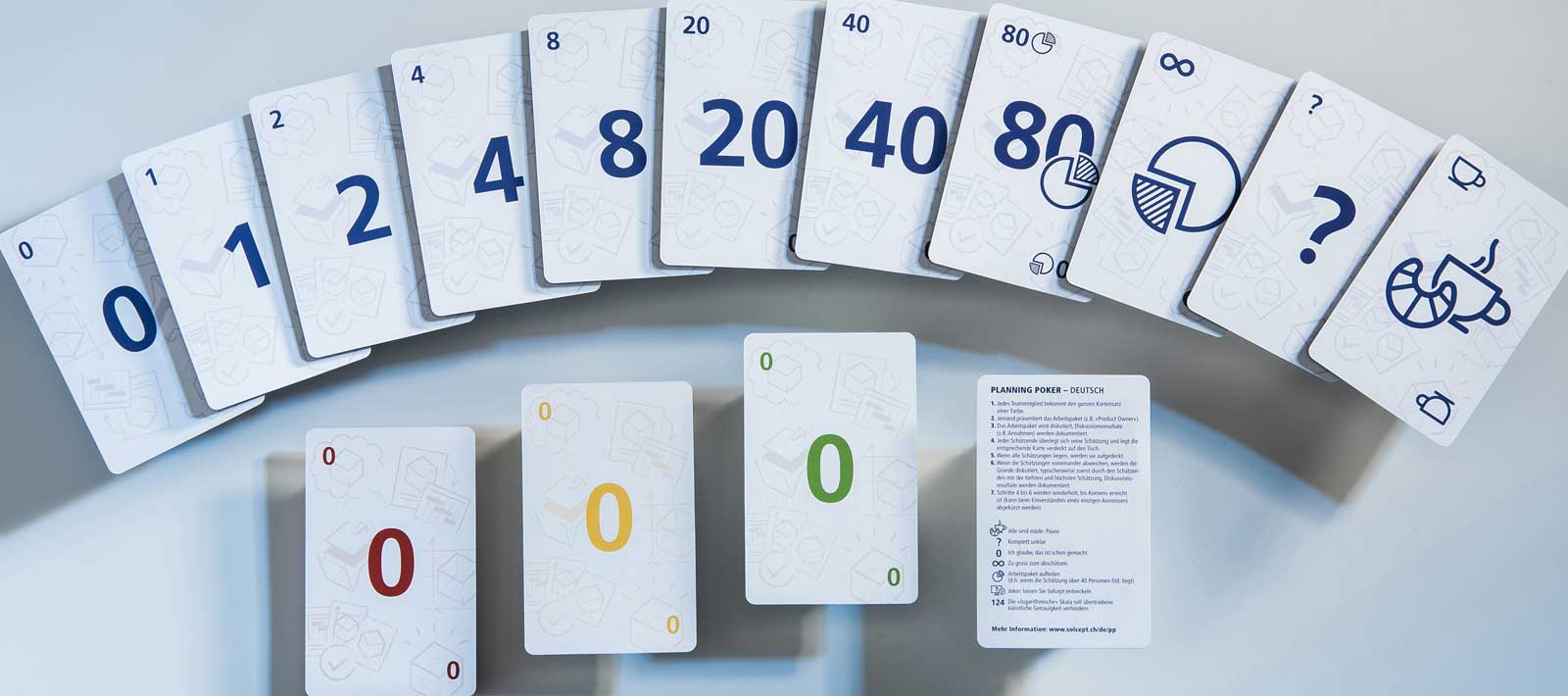How can I get the Set?
We send you the deck (complete set for four estimators) for 10 CHF per set plus 10 CHF delivery cost (prepayment outside Switzerland):
What is the history of Planning Poker?
The general Delphi-Method has been developed by Rand Corporation in the 1960ies. 2002 James W. Grenning used the first time the notion „Planning Poker” (see this paper).

Planning Poker Instructions
How to play Planning Poker?
- Each member of the team gets the complete set of cards of one suit
- Somebody presents the work items (e.g. „Product Owner”, product manager, project leader)
- The work item is discussed, discussion results (details, assumptions, risks) are documented
- Each estimator thinks about the estimate and places one according card face down (numbers hidden) on the table
- When all estimates/ cards are on the table, the cards are shown
- If the estimates disagree, the reasons for the differences are discussed, typically first by the estimators aiming
lowest and highest, discussion results (details, assumptions, risks) are documented. - Steps 4 to 6 are repeated until consensus is reached (can be shortened if a single outlier agrees to go with all others)
What is the Meaning of the Cards?
The numbers can stand for hours but also other quantities like cost (in 1000's), risk, "Story Points". In Scrum it is frowned upon directly estimating hours, but in many organizations hours are important. This is why our card deck is optimized for estimation of hours.
Meaning of Special Cards
See the following figures:
Contact us for your own Planning Poker deck: Send me an order email!
Andreas Stucki
Do you have additional questions? If so, email me or comment your thoughts below!








No Comments